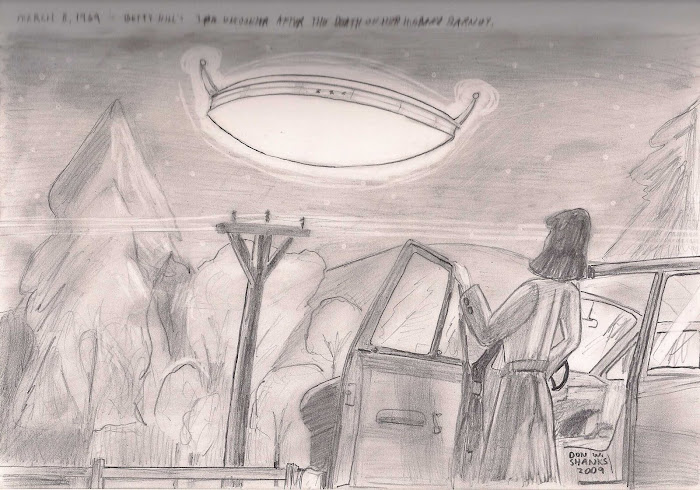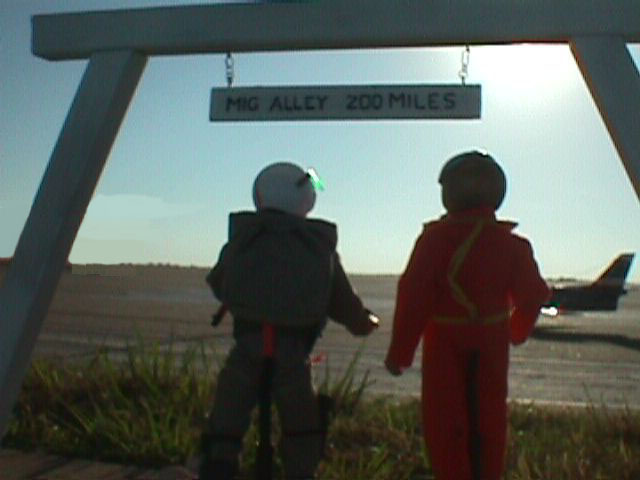
.jpg)
From a posting made on Springbored's Springboard, there was an article from Inside Defense breaking the news(to me anyway) that Boeing is offering to start up production of the OV-10 again for Counter-Insurgency Operations (COIN). Quote "While the twin-engine plane would maintain much of its 1960s-vintage rugged external design, the 21st Century edition would feature a computerized cockpit, intelligence sensors and smart-bomb-dropping capabilities, according to an OV-10(X) product card obtained by ITAF.
The Chicago defense-giant has quietly been circulating plans at military-sponsored events across the country that detail how the company could rebuild and modernize the Bronco, according to Pentagon and industry officials." And SS offered the following observation of his own, "That's a sweet plane, capable of serving in low-threat areas....and it can land on an amphibious flattop. Just don't go too crazy goldplating it. And build 'em fast."
Come on, the OV-10? Hows about restarting the production line on the A-10! The A-10 Warthog is the best gun platform ever in my personal opinion for attacking targets on the ground and killing them.
Then I thought about it a bit more and remembered that I had read an article in the U.S. Naval Proceedings sometime between 1994 and 2004 from a Marine officer who proposed that there be a OV-10 replacement and that the service should look at the World War Two design - the Grumman F-7F Tigercat.
The Tigercat was generally more armored than the Bronco. It could survive combat better than the OV-10. What this Marine officer was proposing was to replace the twin radial engines with twin turbo-props or twin turbo-fan engines. Have a internal bomb bay be designed for modern weapons. It would of course have the latest in electronics to survive in the modern combat environment.
Here are the specifications of the Tigercat. Two 2,100hp Pratt & Whitney R-2800-34W Double Wasp 18-cylinder radial piston engines. Max take-off weight of 25,720 pounds. Wingspan of 51 feet, 6 inches. Fuselage length is 45 feet, 4.5 inches. Height of 16 feet, 7 inches. Max speed at 22,200 feet is 435 mph. Cruise at 5,000 feet of 222 mph. It had a ceiling of 40,700 feet and a range of 1,200 miles. Armament was (4) 20mm cannon in the wing roots. Four .50 cal machine guns in the nose. One torpedo slung under the fuselage or 2,000 pounds of bombs (1,000 under each wing).
These are the specifications for the OV-10D. Twin Garrett T76-G-420/421 series turboprops delivering 1,040 horsepower each engine. Top speed of 288 miles-per-hour, a range of 1,382 miles and a service ceiling of up to 30,000 feet. The OV-10 last saw action in Desert Storm. The following is a quote from the military factory webpage on the type that saw action in that conflict:
"Nevertheless, the USMC sent their Broncos into Saudi Arabia making up USMC VMO-1 and VMO-2. In the conflict, the first aircraft lost to enemy fire was an OV-10A from VMO-2. Since this aircraft was an A-model lacking the infrared suppressors on its exhaust stacks, it made relatively easy pickings for shoulder-launched heat-seeking missiles. These shoulder-launched mobile missile platforms were not yet a technological threat in the Vietnam conflict so it was a new threat to original Broncos in the Persian Gulf.
Despite both pilots ejecting safely, they were captured an tortured as Iraqi POWs till the end of the war. Typical Bronco weapon loadouts in the conflict included a single AIM-9 Sidewinder to counter enemy aircraft threats as well as rocket armament and their standard machine gun arrangements to counter ground elements. Broncos also spent their time assisting A-6 Intruders and AV-8B Harriers along with marking targets via white phosphorous rockets as well as spotting for naval-based artillery guns. "
For me as a amateur, or "armchair historian" - I kinda like the idea of something old find a new lease on life. But the OV-10 as oppose to what I remembered reading in the Naval Proceedings just doesn't seem right. Also, there are those who would prefer that the OV-1 Mohawk rather than the Bronco would be the perfect candidate to relaunch. But the Mohawk (and the Tigercat) are Grumman products - not Boeings'. And Boeing is tyring to some up with programs to keeps its workforce employeed.
And in closing, as an example, please read the following article by David Axe entitled "Old is the New New again."
With the V-22 Osprey ready to enter operational service, the Marines are looking at new toys to take advantage of the tilt-rotor craft's range and versatility. One of these is a new 120-mm rifled mortar. But mortars need vehicles to haul them -- and guess what? The V-22's cabin is too small to fit a Humvee. So the Marines are seriously considering buying a new version of the old M-151 Jeep to move the mortar. Imagine that: the old Jeep back in production, 20 years after it got bumped off the battlefield by the Humvee. It's not the only case where the military is looking to old machines -- some decades out of service -- to meet its current and future needs.
The costs of new weapons are spiraling at an alarming rate. That goes double for adventurous new programs like Future Combat Systems, which are proving largely technologically impossible. But with a war going on, the Defense Department needs gear that's going to work -- now. It's no surprise, then, that the Pentagon is turning to equipment that proved its worth back when Rummy was Gerald Ford's SecDef.
Consider the Vietnam-era Light Anti-tank Weapon, or LAW. Finding modern rockets like Javelin too complicated and expensive for urban warfare, the Marines have begun issuing LAWs to units in Iraq. On the aviation side, the Marines have ordered the first UH-1Y Hueys, new-production updates of the 30-year-old UH-1N. The AH-1 Cobra fleet is getting a similar makeover, albeit in a rebuild program for old airframes. Both helos are coming in on time, on budget and with the capabilities the Marines need. Meanwhile, the CH-53 is about to go back into production in a new version to replace choppers worn out in Iraq and Afghanistan.
Across the aisle, the Army is reissuing old M-14 rifles. And soon the UH-60 fleet will be replaced with -- you guessed it -- the UH-60, in an updated model.
In the Navy camp, skeptical old vets are leading a campaign to put two mothballed battleships back into service as alternatives to the Navy's $3-billion-per-copy DD(X) destroyer, which is being touted as a fire-support platform but, according to the Naval Fire Support Association, will provide only a fraction of the firepower of the old BBs at far greater cost, and much later.
My friend Jim Doner, a retired Marine warrant officer who flew forward air control missions over Vietnam, is not at all surprised at this development. He says the best weapons are the old proven ones ... paired with an experienced, courageous operator. In particular, he laments the premature retirement of the OV-10 Bronco, a rugged, slow, cheap little airplane that excelled at getting airborne controllers over the battlefield where they could direct artillery and bombs more accurately than even today's controllers with their whiz-bang targeting pods. Doner says the OV-10 went away (in 1995) in favor of hi-tech multi-role jets that aren't always good at the simple, dirty and dangerous missions that are important in low-intensity wars.
-end of David Axe's article-
___
Ref. (http://warisboring.com/?p=1600)
(http://springboarder.blogspot.com/2009/01/ultimate-coin-ov-10-bronco-comin-back.html)
(http://www.noahshachtman.com/archives/001957.html)
picture reference: F-7f from (http://www.livingwarbirds.com/images/f7f-pics/f7f-3p_tigercat.jpg)








+033.jpg)
No comments:
Post a Comment